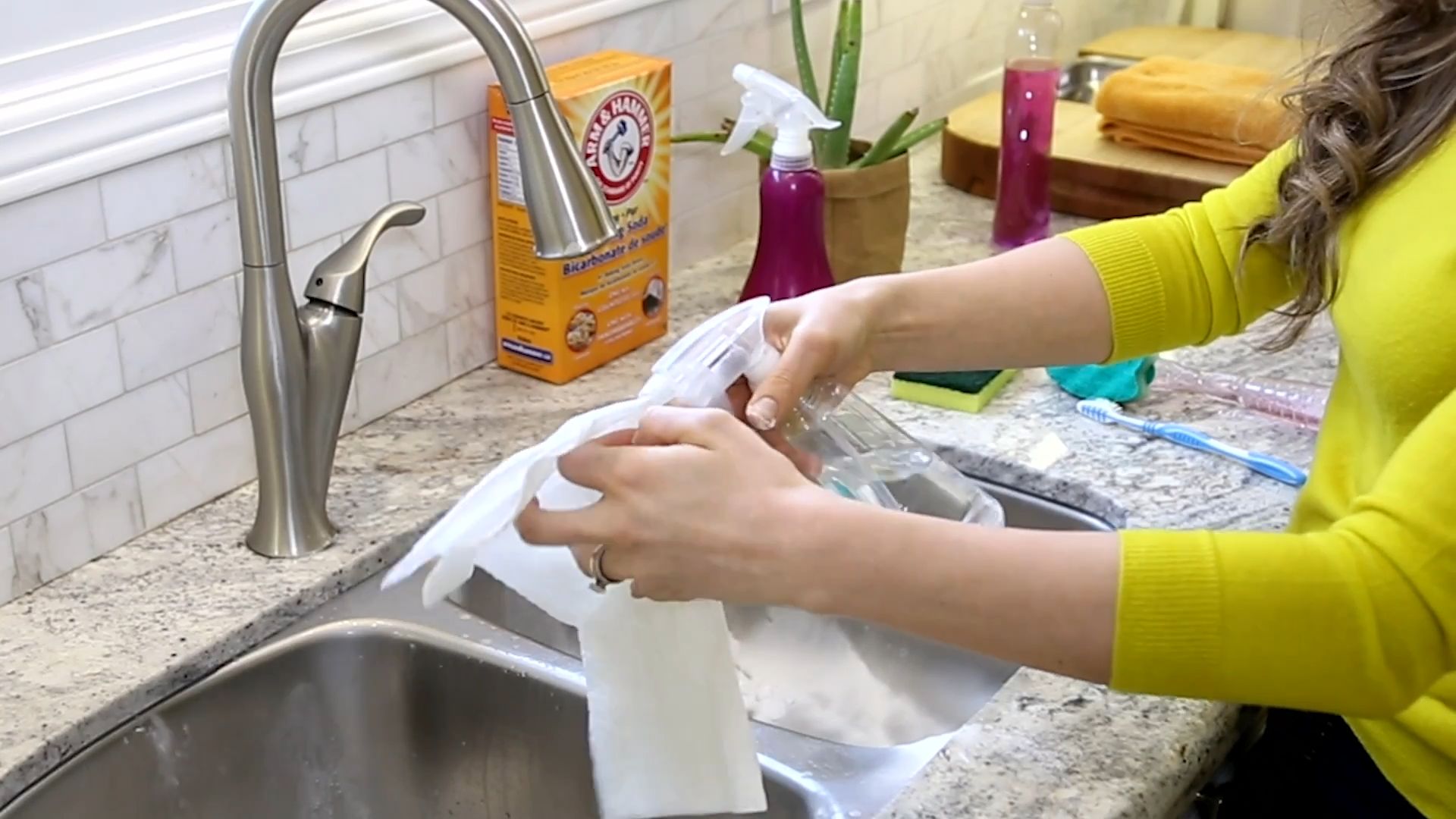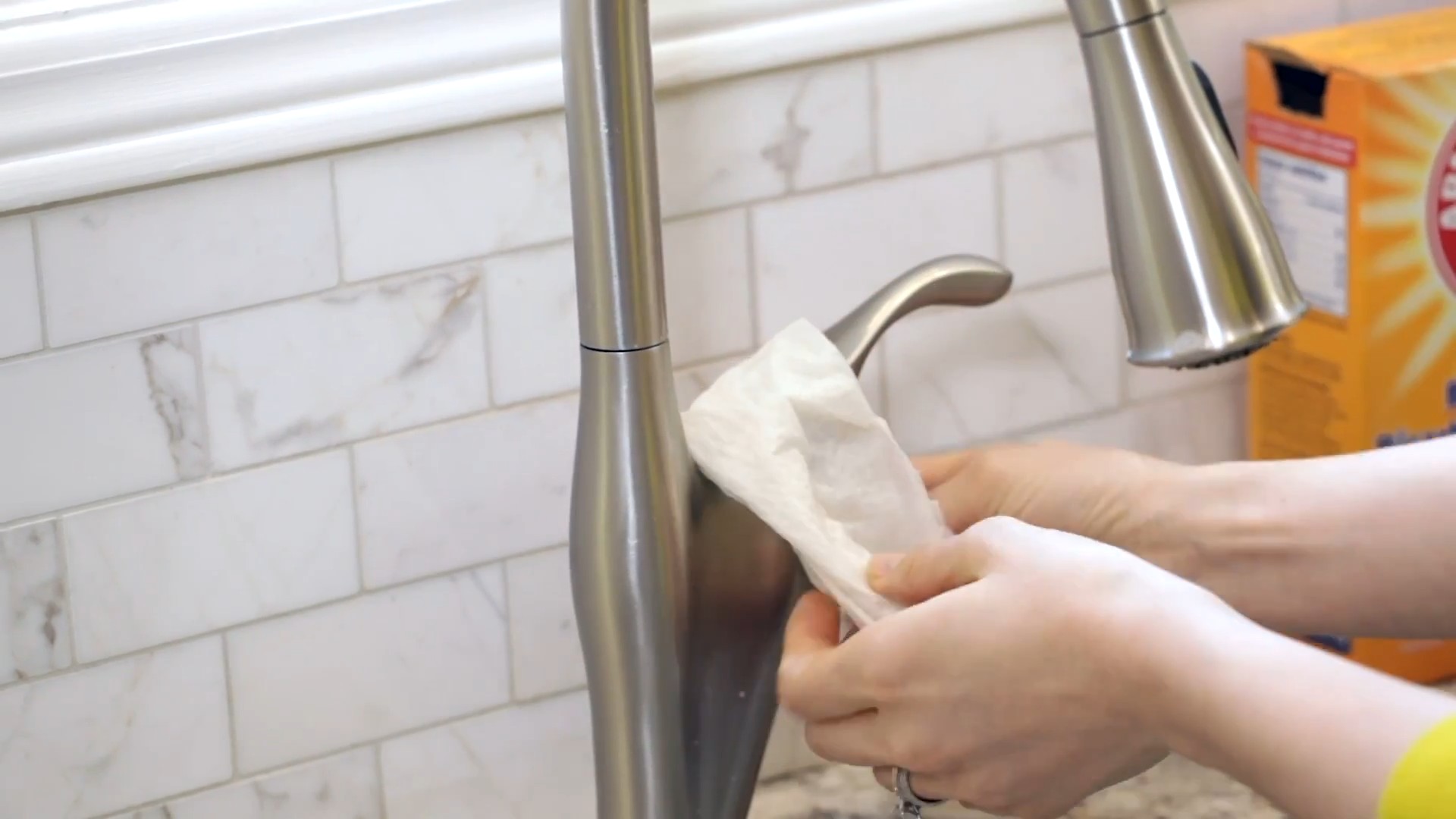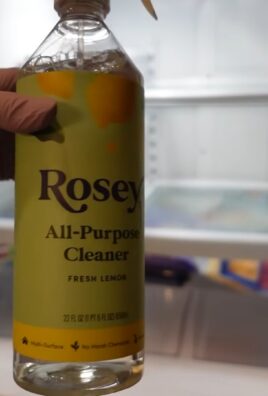Vinegar cleaning tips – who knew something so readily available in our pantry could be a secret weapon for a sparkling clean home? I’m always on the lookout for effective, eco-friendly cleaning solutions, and vinegar has consistently proven to be a champion. For centuries, vinegar has been used for its antibacterial and cleaning properties, dating back to ancient civilizations who utilized it for everything from preserving food to disinfecting wounds. Think about it – our grandmothers probably swore by it!
But in today’s world, with a plethora of harsh chemicals lining store shelves, many of us have forgotten the simple power of this natural cleaner. That’s why I’m so excited to share these DIY vinegar cleaning tricks with you. Not only are they incredibly effective at tackling grime, grease, and odors, but they’re also budget-friendly and better for the environment. Plus, you’ll avoid exposing yourself and your family to potentially harmful chemicals.
Ready to ditch the expensive, store-bought cleaners and embrace the magic of vinegar cleaning tips? Let’s dive in and discover how this humble ingredient can transform your cleaning routine and leave your home fresh and sparkling!

DIY All-Purpose Vinegar Cleaning Powerhouse
Okay, friends, let’s talk vinegar! I know, I know, the smell isn’t exactly Chanel No. 5, but trust me, this humble kitchen staple is a cleaning superhero in disguise. I’m going to walk you through how to create an all-purpose vinegar cleaning solution that’s effective, eco-friendly, and seriously budget-friendly. Get ready to ditch those harsh chemicals and embrace the power of vinegar!
Gathering Your Supplies
Before we dive in, let’s make sure we have everything we need. This is a super simple project, so the supply list is short and sweet.
* **White Distilled Vinegar:** This is the star of the show! Make sure it’s white distilled vinegar, not apple cider vinegar or any other kind. The acidity is what gives it its cleaning power.
* **Water:** Tap water is perfectly fine.
* **Essential Oils (Optional):** This is where you can customize your cleaner and make it smell amazing! I love using lemon, lavender, tea tree, or eucalyptus.
* **Spray Bottle:** A clean, empty spray bottle is essential for application.
* **Measuring Cup or Spoons:** For accurate measurements.
* **Funnel (Optional):** Makes pouring liquids into the spray bottle much easier and less messy.
Mixing Your Vinegar Cleaning Solution
Alright, let’s get mixing! This is the fun part. I’ll give you a basic recipe, but feel free to adjust it to your liking.
1. **Prepare Your Spray Bottle:** Make sure your spray bottle is clean and dry. This will prevent any unwanted contamination.
2. **Combine Vinegar and Water:** In your measuring cup, combine equal parts white distilled vinegar and water. A good starting point is 1 cup of vinegar and 1 cup of water. For a stronger solution, you can increase the vinegar ratio, but I usually stick to 50/50 for most surfaces.
3. **Add Essential Oils (Optional):** This is where you can get creative! I usually add about 10-20 drops of essential oil per 2 cups of solution. Start with a smaller amount and add more until you reach your desired scent strength. Remember, some essential oils are stronger than others.
* Lemon Essential Oil: Great for cutting through grease and leaving a fresh, citrusy scent.
* Lavender Essential Oil: Adds a calming and relaxing aroma.
* Tea Tree Essential Oil: Has antibacterial and antifungal properties, making it ideal for cleaning bathrooms.
* Eucalyptus Essential Oil: Provides a refreshing and invigorating scent.
4. **Pour into Spray Bottle:** Using your funnel (if you have one), carefully pour the vinegar mixture into your spray bottle.
5. **Shake Well:** Secure the spray nozzle and shake the bottle vigorously to ensure the ingredients are thoroughly combined.
Using Your All-Purpose Vinegar Cleaner
Now that you’ve created your amazing vinegar cleaning solution, let’s put it to work! Here are some of my favorite ways to use it:
1. **Countertops:** Spray the solution onto your countertops and wipe clean with a damp cloth. Be careful on natural stone surfaces like granite or marble, as vinegar can etch them over time. Always test in an inconspicuous area first.
2. **Sinks and Faucets:** Spray the solution onto your sinks and faucets, let it sit for a few minutes, and then scrub with a sponge or brush. Rinse thoroughly with water.
3. **Showers and Tubs:** Spray the solution onto your shower walls and tub, let it sit for a few minutes, and then scrub with a sponge or brush. Rinse thoroughly with water. This is especially effective for removing soap scum.
4. **Toilets:** Spray the solution into the toilet bowl and around the rim, let it sit for a few minutes, and then scrub with a toilet brush. Flush the toilet.
5. **Floors:** Add 1/2 cup of vinegar to a bucket of warm water and mop your floors. Again, be careful on natural stone floors.
6. **Windows and Mirrors:** Spray the solution onto your windows and mirrors and wipe clean with a microfiber cloth. This will leave them streak-free and sparkling.
7. **Appliances:** Spray the solution onto your appliances, such as your refrigerator, oven, and microwave, and wipe clean with a damp cloth.
8. **Cutting Boards:** Spray the solution onto your cutting boards after each use to disinfect them.
9. **Coffee Maker:** Fill the water reservoir of your coffee maker with equal parts vinegar and water. Run a brewing cycle, then run two cycles with plain water to rinse.
10. **Laundry:** Add 1/2 cup of vinegar to your washing machine during the rinse cycle to help soften clothes and remove odors.
Tackling Specific Cleaning Challenges with Vinegar
Vinegar is a versatile cleaner, but it really shines when tackling specific cleaning challenges. Let’s explore some of these in more detail.
Removing Hard Water Stains
Hard water stains can be a real pain, especially in bathrooms. Vinegar’s acidity helps dissolve these mineral deposits.
1. **Identify the Affected Areas:** Look for white, chalky deposits on faucets, showerheads, shower doors, and toilet bowls.
2. **Soak with Vinegar:** For faucets and showerheads, you can soak them in a bag filled with vinegar. Secure the bag with a rubber band. For shower doors and toilet bowls, spray the area generously with vinegar and let it sit for at least 30 minutes, or even overnight for stubborn stains.
3. **Scrub and Rinse:** After soaking, scrub the area with a sponge, brush, or even an old toothbrush. Rinse thoroughly with water.
4. **Repeat if Necessary:** For particularly stubborn stains, you may need to repeat the process.
Deodorizing Your Home with Vinegar
Vinegar is a natural odor absorber, making it a great alternative to chemical air fresheners.
1. **Vinegar Air Freshener:** Fill a small bowl with vinegar and place it in the room you want to deodorize. The vinegar will absorb odors over time. You can add a few drops of essential oil to the bowl to mask the vinegar smell.
2. **Simmering Vinegar:** Simmer a pot of water with a few tablespoons of vinegar on the stove to freshen up your entire home. You can add citrus peels, cinnamon sticks, or cloves to the pot for a more pleasant aroma.
3. **Vinegar in the Dishwasher:** Add 1 cup of vinegar to the bottom rack of your dishwasher and run a cycle to remove odors and mineral buildup.
4. **Vinegar in the Washing Machine:** Add 1/2 cup of vinegar to your washing machine during the rinse cycle to remove odors from your laundry.
Cleaning Your Microwave with Vinegar
Cleaning a microwave can be a messy chore, but vinegar makes it much easier.
1. **Vinegar Steam Clean:** Combine 1 cup of water and 1/4 cup of vinegar in a microwave-safe bowl.
2. **Microwave for Several Minutes:** Microwave the mixture on high for 3-5 minutes, or until the solution boils and the microwave is filled with steam.
3. **Let it Sit:** Let the bowl sit in the microwave for 5-10 minutes to allow the steam to loosen any stuck-on food particles.
4. **Wipe Clean:** Carefully remove the bowl and wipe the inside of the microwave clean with a damp cloth.
Unclogging Drains with Vinegar and Baking Soda
This is a classic DIY drain cleaner that’s effective and eco-friendly.
1. **Pour Baking Soda Down the Drain:** Pour about 1/2 cup of baking soda down the drain.
2. **Pour Vinegar Down the Drain:** Follow with 1 cup of vinegar.
3. **Let it Fizz:** Let the mixture fizz for 30 minutes.
4. **Flush with Hot Water:** Flush the drain with hot water for several minutes.
5. **Repeat if Necessary:** If the drain is still clogged, repeat the process.
Important Considerations and Precautions
While vinegar is a fantastic cleaning agent, it’s important to keep a few things in mind:
* Not for All Surfaces: Avoid using vinegar on natural stone surfaces like granite and marble, as it can etch them over time. Also, avoid using it on waxed wood furniture, as it can damage the finish.
* Test in an Inconspicuous Area: Before using vinegar on any surface, always test it in an inconspicuous area first to make sure it doesn’t cause any damage or discoloration.
* Don’t Mix with Bleach: Never mix vinegar with bleach, as this can create toxic fumes.
* Ventilation: When using vinegar in enclosed spaces, make sure to ventilate the area well.
* Storage: Store your vinegar cleaning solution in a cool, dark place.
I hope this guide has inspired you to embrace the cleaning power of vinegar! It’s a simple, affordable, and eco-friendly way to keep your home clean and fresh. Happy cleaning!

Conclusion
So, there you have it! This simple yet powerful vinegar cleaning trick is a game-changer for anyone looking to ditch harsh chemicals and embrace a more natural and effective cleaning routine. We’ve explored how the acidity of vinegar acts as a potent disinfectant and deodorizer, making it an ideal solution for tackling everything from stubborn grime in your bathroom to lingering odors in your kitchen.
But why is this DIY approach a must-try? Beyond its eco-friendliness and cost-effectiveness, this method offers a level of control and customization that you simply can’t achieve with store-bought cleaners. You know exactly what’s going into your cleaning solutions, avoiding potentially harmful additives and fragrances. Plus, the satisfaction of creating something yourself that genuinely works is incredibly rewarding.
This vinegar cleaning trick is not just a trend; it’s a sustainable and practical solution for a cleaner, healthier home.
Now, let’s talk variations. While plain white vinegar is a workhorse, you can easily tailor it to your specific needs and preferences. Infuse your vinegar with citrus peels (lemon, orange, grapefruit) for a fresh, invigorating scent and added cleaning power. Simply soak the peels in vinegar for a week or two, then strain and use as usual. For tougher stains, consider adding a tablespoon of baking soda to your vinegar solution – the fizzing action helps to lift dirt and grime. Be cautious when mixing, as it can create pressure in a closed container. Essential oils like tea tree, lavender, or eucalyptus can also be added for their antibacterial properties and pleasant aromas. Just a few drops will do the trick! Remember to always test your vinegar solution on an inconspicuous area first, especially on delicate surfaces like marble or granite.
We understand that switching to a DIY cleaning routine can seem daunting at first, but trust us, the results are worth it. The savings, the peace of mind knowing you’re using safe ingredients, and the sparkling clean surfaces will quickly make you a convert.
We wholeheartedly encourage you to give this vinegar cleaning trick a try. Start with a small project, like cleaning your microwave or wiping down your countertops. Once you see the effectiveness of vinegar, you’ll be amazed at how many other areas of your home you can clean with it.
Don’t just take our word for it! We’re eager to hear about your experiences. Share your before-and-after photos, your favorite vinegar cleaning recipes, and any tips or tricks you’ve discovered along the way. Let’s build a community of eco-conscious cleaners who are passionate about creating healthy and happy homes. Head over to our social media pages or leave a comment below to share your thoughts. We can’t wait to see what you create!
Ready to ditch the chemicals and embrace the power of vinegar? Your home (and your wallet) will thank you!
Frequently Asked Questions (FAQs)
Is vinegar safe to use on all surfaces?
While vinegar is a versatile cleaner, it’s not suitable for all surfaces. Avoid using it on natural stone surfaces like marble, granite, and travertine, as the acidity can etch and damage them. It’s also best to avoid using vinegar on waxed wood furniture, as it can strip the wax finish. Always test your vinegar solution on an inconspicuous area first to ensure it doesn’t cause any discoloration or damage. For delicate surfaces, dilute the vinegar with more water.
What type of vinegar is best for cleaning?
Plain white distilled vinegar is the best choice for cleaning. It’s inexpensive, readily available, and has a consistent acidity level. Avoid using other types of vinegar, such as apple cider vinegar or balsamic vinegar, as they may contain sugars or other additives that can leave a sticky residue. Cleaning vinegar is also available, which has a higher acidity level than regular white vinegar, making it even more effective for tough cleaning jobs. However, be sure to dilute cleaning vinegar appropriately, as it can be more corrosive.
Can I mix vinegar with bleach?
Absolutely not! Mixing vinegar with bleach creates chlorine gas, which is highly toxic and can be fatal. Never, ever mix these two substances. Always use vinegar and bleach separately, and rinse surfaces thoroughly after using one before applying the other. Safety should always be your top priority when cleaning.
How do I get rid of the vinegar smell after cleaning?
The vinegar smell typically dissipates within a few hours. To speed up the process, you can open windows and doors to ventilate the area. You can also add a few drops of essential oils to your vinegar solution to mask the smell. Citrus essential oils, like lemon or orange, work particularly well. Another option is to boil a pot of water with a few cinnamon sticks or cloves to freshen the air.
Can vinegar kill mold?
Yes, vinegar can kill mold. White distilled vinegar contains about 5% acetic acid, which is effective at killing approximately 82% of mold species. To kill mold with vinegar, spray undiluted vinegar onto the affected area and let it sit for an hour. Then, wipe the area clean with a damp cloth. For stubborn mold growth, you may need to repeat the process. However, it’s important to note that vinegar may not be effective against all types of mold, and in some cases, professional mold remediation may be necessary.
How can I use vinegar to clean my washing machine?
Vinegar is a great natural cleaner for your washing machine. To clean your washing machine with vinegar, add 2 cups of white distilled vinegar to the detergent dispenser and run a hot water cycle. This will help to remove detergent buildup, mineral deposits, and odors. You can also clean the rubber gasket around the door with a vinegar solution to prevent mold and mildew growth. Repeat this process every few months to keep your washing machine clean and fresh.
Is vinegar effective for cleaning hard water stains?
Yes, vinegar is very effective for cleaning hard water stains. The acidity of vinegar helps to dissolve mineral deposits, such as calcium and lime, that cause hard water stains. To remove hard water stains with vinegar, soak a cloth or sponge in vinegar and apply it to the affected area. Let it sit for a few minutes, then scrub with a non-abrasive sponge or brush. Rinse with water and dry with a clean cloth. For stubborn stains, you may need to repeat the process or use a stronger vinegar solution.
Can I use vinegar to clean my coffee maker?
Yes, you can use vinegar to clean your coffee maker. To clean your coffee maker with vinegar, fill the water reservoir with a solution of equal parts white distilled vinegar and water. Run a full brewing cycle, then discard the vinegar solution. Repeat the process with fresh water to rinse out any remaining vinegar. This will help to remove mineral buildup and improve the taste of your coffee.
How often should I clean with vinegar?
The frequency of cleaning with vinegar depends on your individual needs and preferences. For general cleaning, you can use vinegar as often as you would use any other cleaning product. For specific tasks, such as cleaning your washing machine or coffee maker, you may only need to do it every few months. Pay attention to your home and adjust your cleaning schedule accordingly.
What are some other creative uses for vinegar in cleaning?
Vinegar is incredibly versatile! Use it to:
* Deodorize your garbage disposal by pouring a cup down the drain and letting it sit for 30 minutes before flushing with hot water.
* Clean your showerhead by soaking it in a bag filled with vinegar overnight.
* Remove stickers and adhesive residue by soaking the area with vinegar.
* Freshen up your laundry by adding a cup of vinegar to the rinse cycle.
* Clean your windows and mirrors for a streak-free shine.
The possibilities are endless! Experiment and discover new ways to incorporate vinegar into your cleaning routine.




Leave a Comment